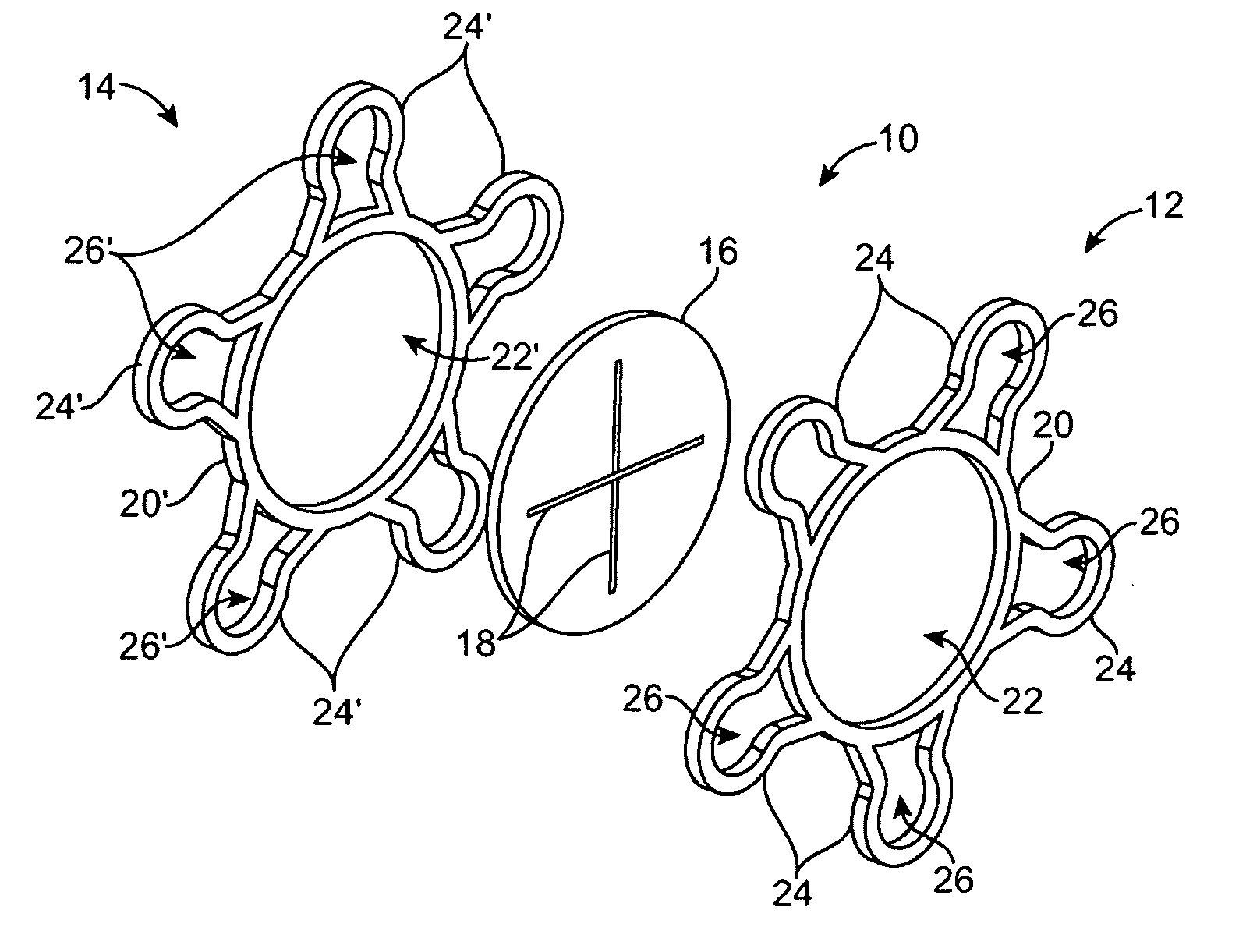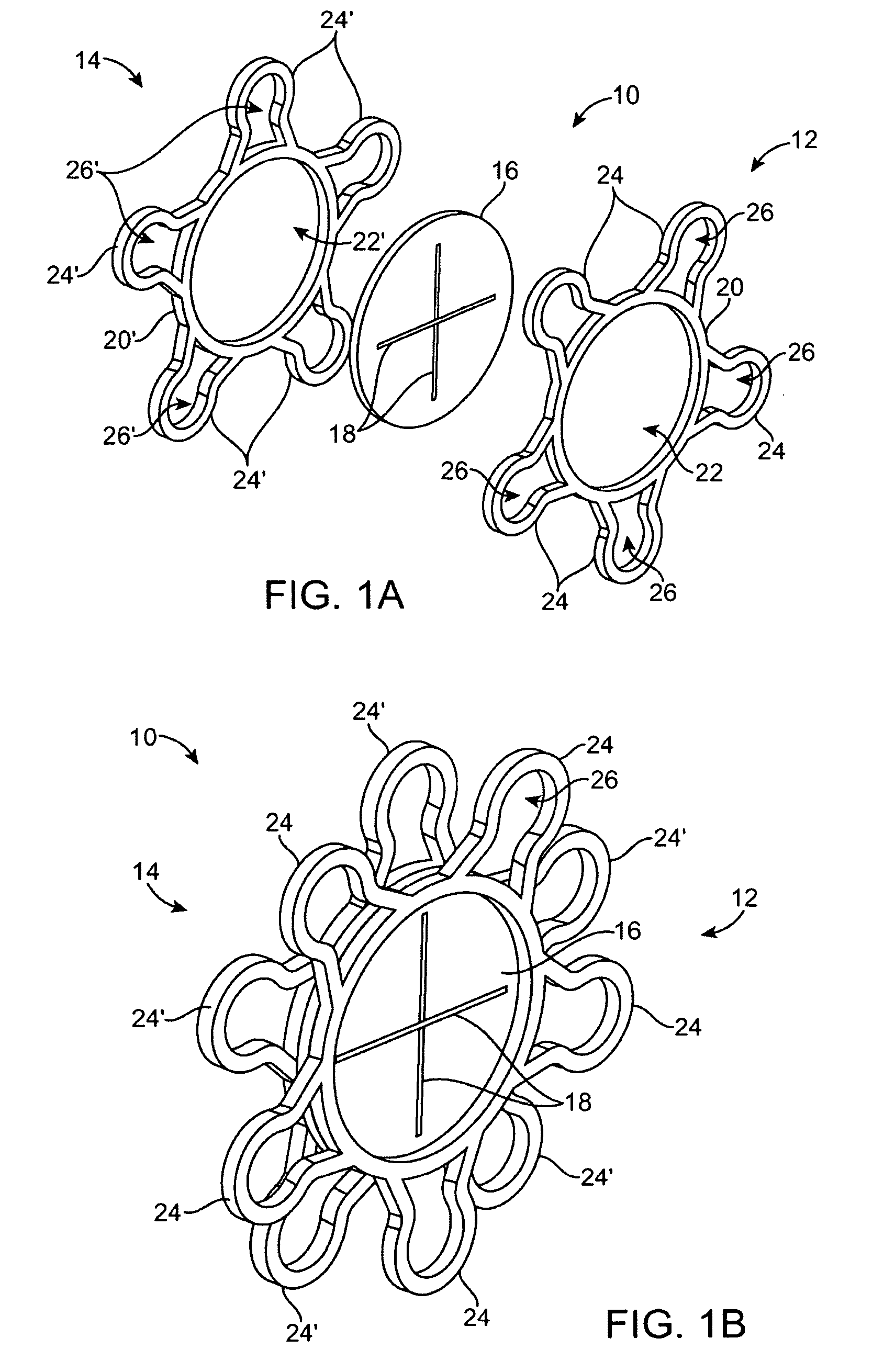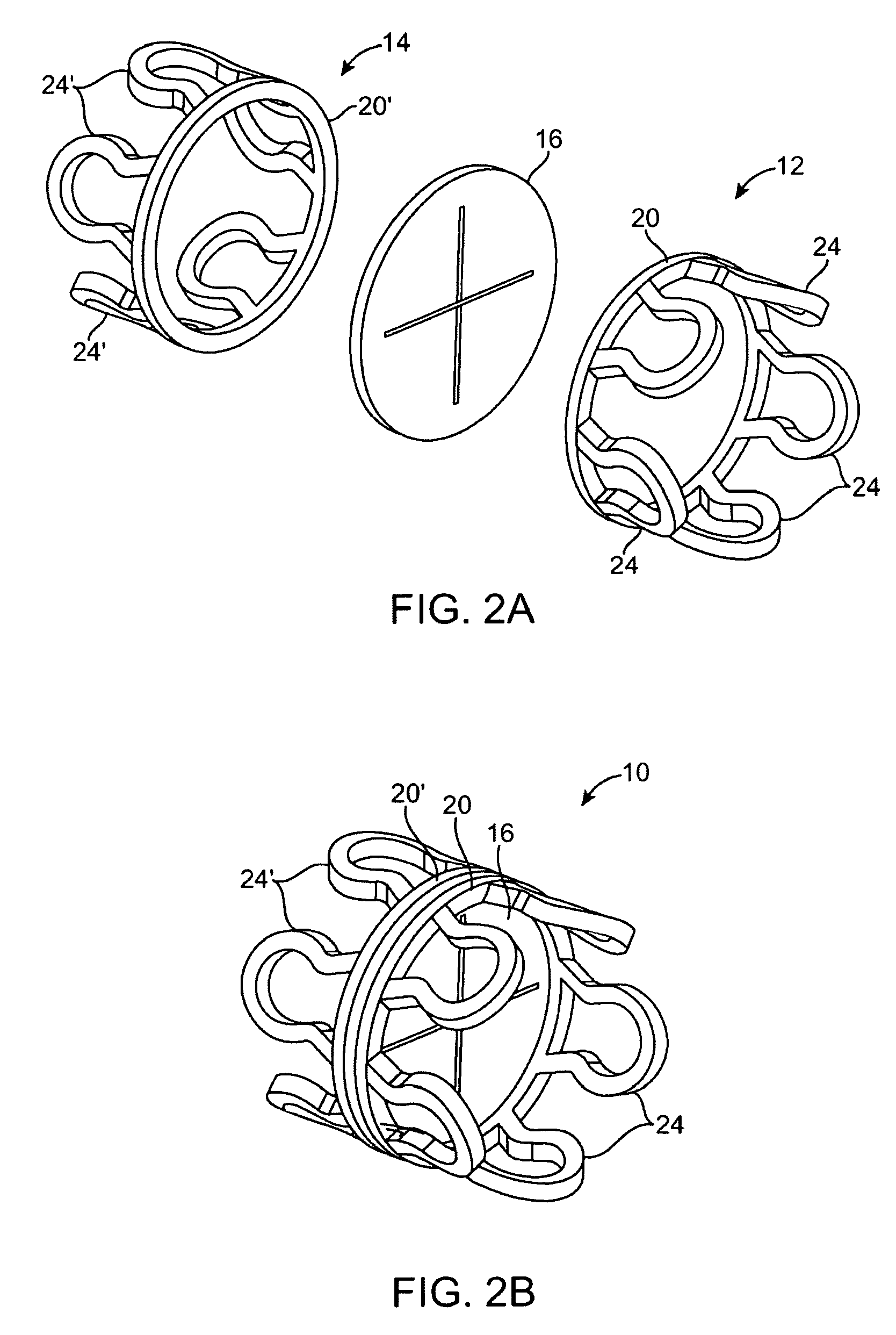Systems for controlled closure of body lumens
a technology of body lumens and controlled closures, which is applied in the direction of catheters, intravenous devices, other medical devices, etc., can solve the problems of vascular access site complications, patient morbidity for interventional techniques, and the inability to close the larger hole left by the larger diameter catheter for a patient, so as to prevent the injury of surrounding tissues and tissue
- Summary
- Abstract
- Description
- Claims
- Application Information
AI Technical Summary
Benefits of technology
Problems solved by technology
Method used
Image
Examples
Embodiment Construction
[0032]Vascular access and / or sealing control devices and methods of use may allow for a single access port which is adhered, connected, or otherwise attached to the wall of a hollow body lumen. e.g., vessels (arteries, veins, etc.), organs (bladder, stomach, etc.), etc., and allows for, but is not limited to, control of small to large sized openings such as vascular defects (e.g., large sized vascular defects or openings may range anywhere from 12 F to 24 F or greater), use with anticoagulation agents, rapid sheath removal, early ambulation of the patient, access through the same port, maintaining a size of the vessel lumen after repair, etc. Although examples of use of the device may be described herein in relation to vessels, it is to be understood that the devices and methods may also be utilized with other hollow body lumens such as the bladder, stomach, etc.
[0033]Moreover, such an access port may allow a user to access and / or re-access the same artery and / or vein of patients ut...
PUM
 Login to View More
Login to View More Abstract
Description
Claims
Application Information
 Login to View More
Login to View More - R&D
- Intellectual Property
- Life Sciences
- Materials
- Tech Scout
- Unparalleled Data Quality
- Higher Quality Content
- 60% Fewer Hallucinations
Browse by: Latest US Patents, China's latest patents, Technical Efficacy Thesaurus, Application Domain, Technology Topic, Popular Technical Reports.
© 2025 PatSnap. All rights reserved.Legal|Privacy policy|Modern Slavery Act Transparency Statement|Sitemap|About US| Contact US: help@patsnap.com



